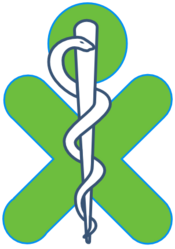Animal health
| NOTE: The contents of this page are not set in stone, and are subject to change! This page is a draft in active flux ... |
The Relevance of Animal Health to Human Health
- Children in rural communities are often directly engaged in the care of their family's livestock and they may live in close association with domesticated animals.
- Improvements in the health of livestock can lead directly to improvements in nutritional and economic status as well as water/sanitation and environmental conditions. All of these can have a critical impact on learning.
- Human health can be adversely impacted by disease in livestock through zoonoses (diseases passed from animals to humans). Examples include some of the most pressing public health concerns in the developing world (e.g. parasitic diseases, avian flu, etc.).
- Education on topics of biological interest (e.g. reproduction) that may be culturally sensitive when approached in the context of human biology, may be less controversial in the context of animal husbandry.
The Relevance of Animal Health content across the target age range
- In it's simplest form (a wikislice on domesticated animals), this content could serve as a "virtual petting zoo" for younger ages.
- In more sophisticated forms (for older children and parents), it could provide a "para-veterinary" reference library.
- A well-developed Animal Health content module can provide a number of opportunities to bridge a Biology curriculum and a Health curriculum. (Example essay assignment: Describe the function of the 4-chambered stomach of a ruminant and compare it's function to the crop of domesticated fowl).
Special Localization Issues
Different regions will have different species of domesticated animals (e.g. llamas in Peru, water buffalo in SouthEast Asia, etc.) and even where the same species are domesticated, different breeds or other conditions may exist that will require some careful tailoring to local circumstances, above and beyond translation into local languages. Input from sources familiar with local conditions and practices will be very important.
Livestock of interest
- Sheep
- Goats
- Llamas / alpacas
- Pigs
- Cows / Oxen
- Water Buffalo
- Yak
- Camels
- Chickens
- Geese
- Ducks
- Rabbits
- Honeybees
- Aquaculture (fish or shellfish farming)
Possible Content / Organization resources
Many non-profit or government supported or affiliated organizations are working in this area and hopefully copyright issues should be fairly straight-forward.
Organizations with world-wide reach in animal health
Peace Corps
Heifer International
- Heifer International is an NGO that is deeply involved in these issues in many of the same communities being targeted for OLPC XO deployments. For instance, there is a Heifer Nepalaffiliate. The Heifer mission to end world hunger and their cornerstone principles appear to be consistent with OLPC's efforts. OLPC/Heifer collaboration on animal health content development could provide Heifer with a novel distribution channel for their educational materials and provide OLPC with access to pre-localized content from Heifer's many community partners in the developing world.
Heifer Affiliates
- Bothar An Irish charity founded in 1991, Bothar provides cows, goats and financial support to Heifer's projects in Africa and Eastern Europe.
- VIVA (Volunteers in Irish Veterinary Assistance])
- Send a Cow A British charity founded in 1988, Send a Cow helps fund Heifer's projects in Africa.
- Heifer Netherlands Founded in 1998 to support Heifer's programs in Eastern Europe and Africa, Heifer Netherlands raises money from European foundations, companies and individuals.
- Hong Kong Formed in 2000, this group is raising funds in Asia for Heifer's projects in China.
Veterinarians Without Borders
There are various organizations modeled as the veterinary equivalent of Doctors without Borders. Veterinarians from around the world working in developing countries to improve the lives of animals and people.
- VWB/VSF-Canada Veterinarians Without Borders/Vétérinaires sans Frontières
- VWB-US
- Veterinarios Sin Fronteras
- Agronomes et Vétérinaires sans Frontières
Local Governmental resources
- Many areas will have some form of training outreach from the local agricultural ministry (cooperative extension programs). Materials from such sources may already exist in localized and locally relevant forms.
Content by/for children
There are a number of organizations in the United States focusing on youth that may be resources for child-developed or child-focused content. Wouldn't it be great to have kids use the XO to take pictures of their family herds/flocks in a world-wide "OLPC County Fair", blue ribbons for all. . .
- 4-H in the United States is a youth organization administered by the Cooperative Extension System of the United States Department of Agriculture (USDA)
- National 4-H Headquarters
- 4-H World Atlas
- National Directory of 4-H Council
- National Directory of 4-H Materials
- 4HUSA.org, an interactive 4-H online community and a resource for 4-H information.
Wikislice
- See linked livestock names above
People
To Do
- Make contacts with organizations above and look into availablility of materials, ideally those developed in target communities (pre-localized and locally relevant).
- Collect and organize wikislice content as introductory materials.
